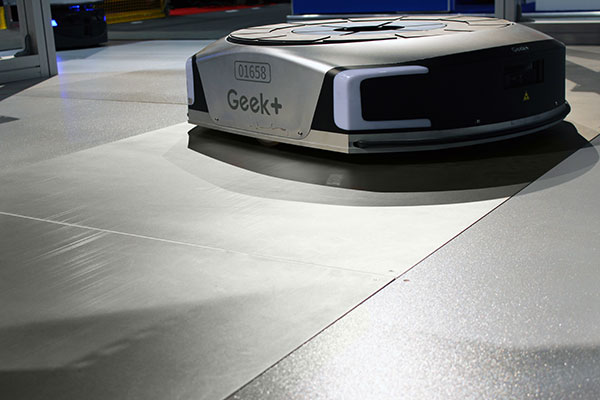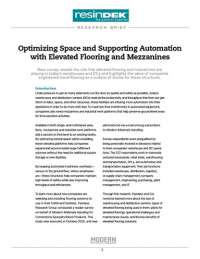Deployments of Autonomous Mobile Robots (AMRs) and Automated Guided Vehicles (AGVs) are surging as warehouses in a broad range of industries continue to struggle with workforce challenges. According to Next Move Strategy Consulting, the mobile robotics market will grow at a compound annual growth rate (CAGR) of 14.2% between now and 2030. Yet, without proper preparation of the surfaces AMRs and AGVs will be rolling over, the vehicles will not work as anticipated and the deployments could fail. Here’s how to make sure your warehouse floor is ready for robotics.
Warehouse Floor Condition Matters
Most warehouse floors are concrete. While concrete can be durable enough for normal warehouse traffic, such as pedestrians and forklifts, it is often not ideal for robotic vehicles.
Dave Paquin, Cornerstone’s Director of Robotic Sales:
“The condition of some concrete floors prevents AMRs and AGVs from moving the way they were intended. Many concrete floors have swales and slopes, cracks and spalling, which cause problems for AGV or AMR navigation. Plus, concrete surfaces lack the durability to withstand the wear created by repeated robotic movement.”
AMRs and AGVs require several key robotic flooring characteristics to ensure successful operation:
- Proper coefficient of friction, or surface roughness, to allow the vehicle’s wheels to achieve enough traction to accelerate, stop, and change directions.
- A level surface to help the vehicles maintain consistent travel speed as they navigate throughout the facility.
- Optimal reflectivity—neither too shiny nor too dull—to permit the robots’ navigational sensors to function accurately and consistently.
- A smooth, blemish-free surface that is unmarred by cracks or spalling, which robots cannot traverse over.
- A high degree of surface durability to resist damage caused by repeated robotic traffic patterns.
It may be possible to remediate damaged concrete through grinding, patching, or applying a fresh concrete or epoxy coating, noted Paquin.
“However, these repairs have multiple drawbacks, including excessive time, dust, and costs,” he said. “Further, none of these repair approaches deliver the characteristics necessary to ensure smooth robotic functioning.”
Install ResinDek® Panels Over Concrete for Robotic Traffic
Just because concrete isn’t the optimal warehouse floor for robotics doesn’t mean an operation can’t deploy AMRs or AGVs. ResinDek robotic flooring panels can be installed directly on top of an existing concrete floor. “The panels create the flooring surface characteristics critical for successful robotic deployments”, Paquin explained.
Before installing ResinDek over warehouse floors, some preparation is necessary to ensure a level surface. First, a digital mapping process documents the floor’s variability in elevation and identifies areas that need correction. To level the existing surface, slopes and swales are corrected and cracks are patched and sealed.
Cornerstone’s engineered layout instructions precisely dictate the ResinDek robotic flooring installation. The layout accounts for columns and other facility structures. Installers lay the engineered ResinDek HD or ResinDek Xspan panels directly over the current warehouse floor — no subflooring required. Integrated tongue-and-groove construction allows the panels to fit together, eliminating any issues with robotic wheel transfer from one panel to the next.
Paquin added:
“Also, both Cornerstone and multiple AMR and AGV manufacturers have tested ResinDek robotic flooring extensively. The results confirm ResinDek panels provide superior durability and wear resistance in robotic applications.”
To make sure your warehouse floor is ready for robotics, don’t take chances with concrete. Install ResinDek robotic flooring panels for a successful AGV or AMR deployment.
Article topics
Email Sign Up



















